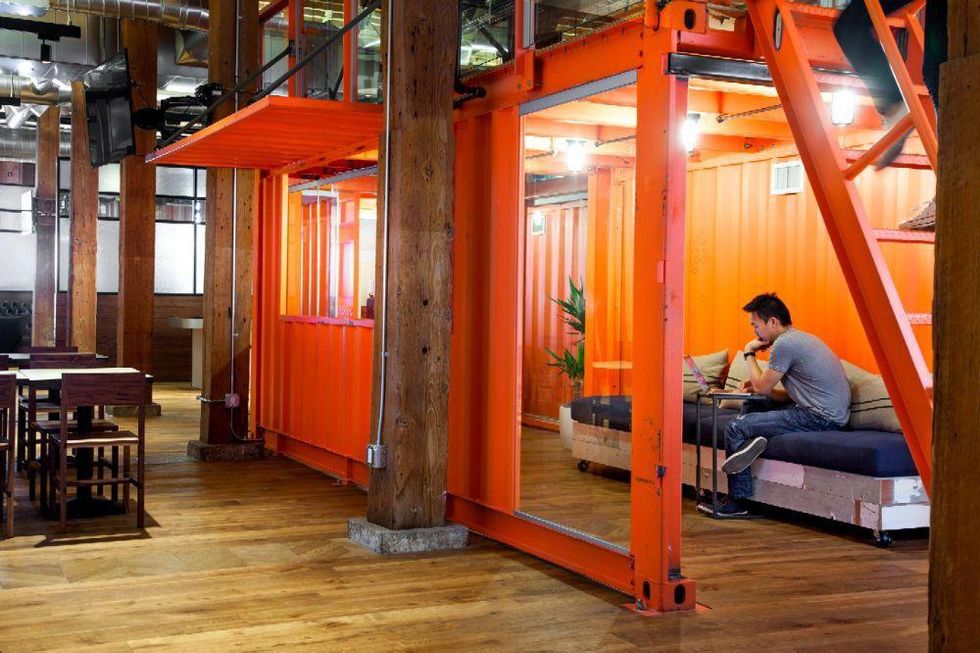When you think of a healthy work environment, you might think of a work environment that is inclusive, promotes employee well-being and productivity, and fosters collaboration, creativity, and innovation. Unfortunately, in today's world, a healthy work environment is the exception, not the rule. How can leaders ensure they are creating and maintaining a healthy work environment for their employees?
We recently asked our leading executives for their best tips on how to create a healthy work environment.
Here are their responses...
Ana Smith, Talent Architect & Global Learning Strategist
[embedded content]When you learn that 80% of cultures are toxic, what would your organizational and team culture be?
A healthy workplace is one where employees feel safe, respected, and supported. It is a place where everyone can thrive and do their best work. There are many things that organizations can do to create a healthy workplace, including:
- Establishing clear expectations and goals. Employees need to know what is expected of them and what they need to do to succeed. This will help them feel more confident and motivated in their work.
- Providing regular feedback. Feedback is essential for helping employees grow and develop. It should be constructive and focused on helping employees improve their performance.
- Creating a culture of respect. Employees should feel respected by their colleagues, managers, and customers. This means treating them with dignity and courtesy, even when there are disagreements.
- Encouraging diversity and inclusion. A diverse and inclusive workplace is a more productive and creative workplace. It is important to create an environment where everyone feels welcome and valued, regardless of their background or beliefs.
- Promoting a healthy work-life balance. Employees need to have a healthy balance between their work and personal lives. This means providing them with opportunities to take breaks, vacations, and sick leave.
- Investing in employee health and wellness. Organizations can help their employees stay healthy and well by providing them with access to health insurance, fitness programs, and other resources.
By taking these steps, organizations can create a healthy workplace where employees are happy, productive, and engaged.
Here are some additional tips for creating a healthy workplace:
- Encourage open communication. Employees should feel comfortable speaking up about their concerns and ideas. This can be done by creating a culture of trust and respect, and by providing employees with multiple channels for communication, such as email, in-person meetings, and anonymous feedback surveys.
- Resolve conflict quickly and fairly. When conflict arises, it is important to address it promptly and fairly. This can help to prevent the conflict from escalating and causing harm to the workplace.
- Provide opportunities for professional development. Employees should have opportunities to learn and grow in their careers. This can be done by providing them with access to training and development programs, and by encouraging them to take on new challenges.
- Celebrate successes. It is important to recognize and celebrate employees' successes. This can help to boost morale and create a positive work environment.
By following these (and other possible) tips, organizations can create a healthy workplace that is beneficial for both employees and the organization as a whole.
Ana Smith helps people & organizations achieve their full talent potential by developing and co-creating people strategies and customized solutions, and turning them into impactful outcomes and collaborative relationships, using coaching as the "red thread."
Michael Willis, Sports Business Operations Executive

Image from Bigstock
In creating a healthy work environment, I can t ignore what the NFL represents and my passion for the shield. Working at the NFL, there are many stadium shots, action on the field photos, stand-out players, and paraphernalia that can quickly fill office space.
My plan for a healthy work begins with the following:
1. The Physical Space
I believe an attractive office design can make employees intrinsically happier. A theme-based workspace can improve employee well-being and promote healthy habits. You are investing in making your office a more enjoyable place to spend time.
Also, an investment in ergonomic chairs, stand-up desktops, and extra monitors can create a more relaxed and functional work environment. You are encouraging an office-friendly supply chain for replenishing office supplies and computer equipment and arranging the office space where departments sit closely when you can maximize collaboration and teamwork.
Lastly, creating an environment where sunlight flows into the office space to lift creativity and awareness—adding theme-based artwork to maximize productivity and boost morale.
2. The Wellness Space
Feedback and communication are the most valuable gifts you can give your employees. Providing a space where employees can voice ideas, opinions, and issues without judgment or criticism. An open engagement platform.
Showing appreciation and recognition for achievements, whether individual or the entire department, makes employees feel valued and appreciated.
An environment of psychological safety is one where employees are comfortable being themselves. Where they know they are free to exist without fearing embarrassment or retaliation.
Prioritize cultural alignment when hiring. As part of the interview process for potential incoming new hires, this might be an excellent opportunity to test the workplace s cultural fit.
Lastly, empower your team with what they need to thrive. Be inclusive. Be appreciative. And communicate!
Michael Willis has 18+ years of experience working with accounting & sports organizations and has managed P&Ls of $10M - $125M+ with budgets of $3M-$50M+. He worked for the NFL for 22 1/2 years, mainly with the game officials working on the financial/accounting side of the business.
Debra Shannon, IT Executive
 Image from Bigstock
Image from BigstockWhen building a positive workplace culture, make sure you invest in each employee s personal development. Are there learning opportunities for them to keep current, get a promotion, or move into a managerial role? Or information to improve their analytical abilities or critical thinking? It s crucial to give employees the tools and information they need to continue learning and growing.
Encourage employees to develop a growth mindset and to be all that they can be. There is a saying by Confucius: I want you to be everything that s you, deep at the center of your being. Do you encourage employees to be the best version of themselves? Have you asked them what is important to them? If it s important to them, then it should be important to you too. Besides professional-focused development, make sure to include personal learning opportunities such as enhancing their quality of life (e.g., health/fitness) or developing a reading habit.
Personal development is lifelong learning. And when personal development includes both professional and personal learnings, employees are more likely to be and stay excited about what s next and potentially stay with the organization longer.
Debra Shannon is an IT executive who is also a CPA, CIA, and CISA. Her passion is turning chaos into calm. With her unique blend of experience in technology, project management, and auditing, she can break down complex business problems, identify practical solutions, and lead executive teams and business partners to embrace the value of technology changes.
Lisa Perry, Global Marketing Executive

Image from Bigstock
Fifty-one percent of employees have experienced a toxic work environment, and one in five Americans have left a job in the past five years due to bad company culture. A healthy work environment is not only essential for the well-being and satisfaction of employees but also contributes to higher productivity, lower turnover rates, and overall business success. Here are some practical steps and strategies to create a positive and nurturing work environment that supports your employees' physical, mental, and emotional health.
- Cultivate a Positive Company Culture: Start by fostering a positive company culture that promotes open communication, collaboration, and mutual respect among employees. Encourage a supportive and inclusive environment where individuals feel valued, recognized, and empowered to contribute their best work. Establish clear values, promote work-life balance, and create professional growth and development opportunities.
- Prioritize Employee Well-Being: Invest in employee well-being initiatives prioritizing physical and mental health. Provide access to wellness programs, such as fitness activities, stress management workshops, and mental health resources. Encourage regular breaks and offer flexible work arrangements to support work-life integration.
- Promote Work-Life Balance: Create a work environment that values work-life balance and encourages employees to maintain a healthy equilibrium between their personal and professional lives. Set realistic work expectations, avoid excessive overtime, and encourage employees to take time off as needed. Encourage open communication about workload and provide resources for time management and stress reduction.
- Foster Effective Communication: Establish clear communication channels within the organization to ensure transparency, collaboration, and mutual understanding. Encourage open dialogue, active listening, and constructive feedback. Create opportunities for team-building activities, regular meetings, and cross-departmental collaborations to enhance communication and foster positive relationships among employees.
- Support Professional Growth & Development: Invest in the growth and development of your employees by providing opportunities for training, skill-building workshops, and career advancement. Encourage continuous learning and provide resources for professional development. Recognize and reward achievements to motivate employees and foster a sense of progress and fulfillment in their careers.
- Ensure a Safe & Supportive Physical Environment: Maintain a safe and comfortable physical workspace that promotes employee health. Ensure proper lighting, ventilation, and temperature control. Implement safety protocols and provide equipment and tools to prevent accidents or injuries. Consider creating designated spaces for relaxation, quiet work, and social interactions to cater to different employee needs.
- Lead by Example: As leaders, set the tone for a healthy work environment by demonstrating positive behaviors, effective communication, and a healthy work-life balance. Emphasize the importance of well-being, work-life integration, and professional growth through your actions. Encourage managers and supervisors to adopt supportive leadership styles prioritizing employee well-being and fostering a positive work environment.
Creating a healthy work environment is an ongoing commitment that requires attention, investment, and continuous improvement. By prioritizing employee well-being, promoting work-life balance, fostering effective communication, and supporting professional growth, you can cultivate a positive and thriving work environment that enhances employee satisfaction, productivity, and overall organizational success.
Lisa Perry helps companies build leadership brands, driving loyal customers & delivering profitability. She does this through a process that builds brands consumers love. Her goal is to help companies develop, monetize, and grow their brands.
Mark Taylor, Product & Operations Executive

Image from Bigstock
I think what we are really trying to say here is:
How do you create a work environment where tasks get done in a manner that moves the business forward (that s what employees are ultimately there to do), whilst giving the worker opportunities to grow in a positive way?
Those feel independent of each other scientifically, but highly correlated on a day-to-day basis; the linkage being one s manager.
For example, I m sure most of us have had the opportunity to work for a lousy boss at a great company and a great boss at a lousy company. The latter was probably the more healthy experience for both the individual and the business.
From experience, a solid way of linking a company s and individual s needs is to remind the employee: 1) how the company adds value to the greater good; and 2) how that directly aligns with the employee s values and growth needs.
Mark Taylor has 20+ years of risk, technology, and product management experience working in global and regional financial services firms in the UK and the U.S. He's managed teams of 40+, successfully addressed 100+ regulatory issues, and has saved companies $15M+.
What are your best tips for creating a healthy work environment? Join the conversation inside Work It Daily's Executive Program.
From Your Site Articles
Related Articles Around the Web










